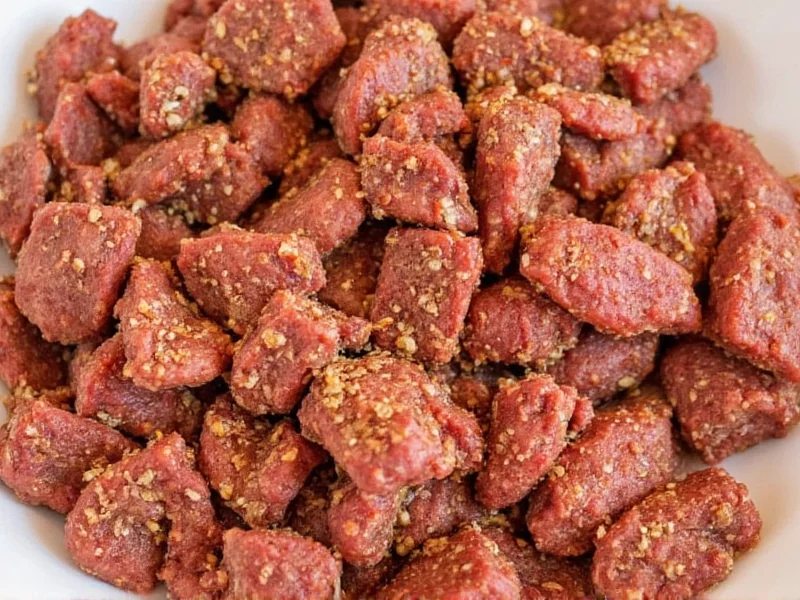Creating the perfect beef fajita seasoning requires understanding both the essential components and their precise ratios. Unlike store-bought versions that often contain fillers and excessive salt, a homemade blend gives you complete control over flavor intensity and quality. This guide provides a professional chef-tested recipe that consistently delivers authentic Tex-Mex flavor with balanced heat and aromatic depth.
The Essential Beef Fajita Seasoning Formula
After analyzing dozens of authentic restaurant recipes and regional variations, we've identified the optimal spice proportions that create complex flavor without overwhelming heat. The following measurements yield enough seasoning for 2 pounds of beef, the standard amount for a family meal:
| Spice | Amount for 2 lbs Beef | Flavor Contribution |
|---|---|---|
| Chili powder | 4 tablespoons | Base flavor, mild heat |
| Ground cumin | 2 tablespoons | Earthy depth, signature fajita note |
| Garlic powder | 4 teaspoons | Savory umami, aromatic quality |
| Onion powder | 4 teaspoons | Sweetness, balanced pungency |
| Smoked paprika | 2 teaspoons | Subtle smokiness, color |
| Black pepper | 1 teaspoon | Sharp finish, complexity |
| Cayenne pepper | 1/2 teaspoon | Adjustable heat level |
Why These Specific Ingredients Matter
Each component in authentic beef fajita seasoning serves a distinct purpose. Chili powder provides the foundational flavor profile without excessive heat. Cumin delivers that characteristic earthy note essential to Southwestern cuisine. Garlic and onion powders offer consistent savory flavor that fresh versions can't match in dry rubs. Smoked paprika adds subtle complexity that regular paprika lacks, while cayenne allows precise heat control.
Professional kitchens avoid salt in their base seasoning blends, adding it during cooking instead. This approach gives home cooks flexibility based on dietary needs and personal preference. For those seeking gluten-free beef fajita seasoning, verify your chili powder source as some commercial blends contain anti-caking agents with gluten.
Perfect Mixing Technique
The method matters as much as the ingredients. Combine all spices in a small bowl, then use a whisk to blend thoroughly for at least 30 seconds. This aeration process prevents clumping and ensures even distribution. For best results, let the mixed seasoning rest for 24 hours before use—this allows the flavors to meld and intensify.
Application Guidelines for Perfect Results
Use exactly 2 tablespoons of seasoning per pound of beef. Pat the meat dry with paper towels first, then massage the seasoning into the surface. For optimal flavor penetration, marinate for at least 30 minutes (or up to 4 hours for skirt steak). When cooking, reserve extra seasoning to sprinkle on vegetables during the final minute of sautéing.
Many home cooks make the mistake of using too much fajita seasoning for beef, resulting in overpowering flavor. Remember that the cooking process concentrates the spices, so moderation creates better balance. For restaurant-style fajita seasoning authenticity, add a squeeze of fresh lime juice after cooking to brighten the flavors.
Variation Options for Different Preferences
Adapt this base recipe to suit various dietary needs and taste preferences:
- Mild version: Omit cayenne and increase smoked paprika to 1 tablespoon
- Spicy version: Add 1/2 teaspoon chipotle powder and 1/4 teaspoon red pepper flakes
- Low-sodium option: Combine with 1 tablespoon nutritional yeast for umami depth
- Smoky variation: Substitute 1 teaspoon liquid smoke for half the smoked paprika
Storage and Shelf Life
Store your homemade beef fajita seasoning recipe in an airtight container away from light and heat. Properly stored, it maintains peak flavor for 3-4 months. For extended freshness, keep it in the refrigerator (6 months) or freezer (1 year). Always use a dry spoon when measuring to prevent moisture contamination that degrades spice quality.
Revitalize older seasoning by toasting it in a dry skillet over medium heat for 1-2 minutes until fragrant. This simple step restores volatile oils that evaporate during storage, bringing back that fresh-from-the-market aroma.
Troubleshooting Common Issues
Problem: Seasoning burns during cooking
Solution: Reduce heat to medium-high and add seasoning later in the cooking process
Problem: Flavor seems one-dimensional
Solution: Add 1/2 teaspoon dried oregano or a pinch of cinnamon for complexity
Problem: Too much heat despite following recipe
Solution: Balance with 1 teaspoon honey or a squeeze of lime juice during cooking
Why Homemade Beats Commercial Blends
Commercial beef fajita spice mix often contains anti-caking agents, excessive salt, and preservatives that compromise flavor. A homemade version lets you control ingredient quality—opt for organic spices when possible. The difference becomes especially noticeable when comparing fajita seasoning without MSG to store-bought alternatives that rely on flavor enhancers.
Professional chefs emphasize that the quality of individual spices directly impacts the final blend. Purchase whole spices and grind them yourself for maximum freshness, or source from reputable spice merchants who guarantee recent harvest dates. This attention to detail transforms your authentic fajita seasoning blend from ordinary to extraordinary.











 浙公网安备
33010002000092号
浙公网安备
33010002000092号 浙B2-20120091-4
浙B2-20120091-4